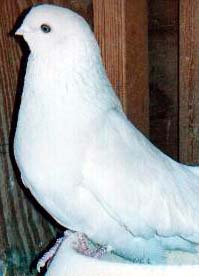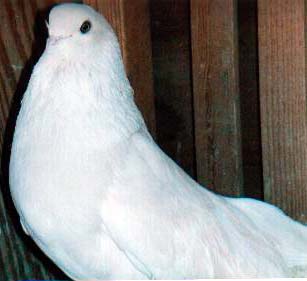It has been a while since a news letter was produced. I could only blame
it on the birds! I didn't want to miss any part of the flying season as
it started for us in Southern California in December. Come to think about
it, it seems that all those who are around the 32 latitude start at the
same time. Molt is over by then and Hawks are slightly less intense. That
means instead of having them around the clock, I get to see it only once
or twice a day and that is while the birds are usually landing. On my
first day of letting the birds out, I lost an adult bird. That happens
to me every year, but this time it was different. Due to weight of the
bird, the Hawk wasn't able to to left it. He clutched on dead pigeon so
tightly and I couldn't pry him off the kill. We basically played with
each other hide and seek and tug of war all that afternoon. He wouldn't
go away as I tied the dead bird to a rope and let go. Minutes latter he
comes back from his hiding and pulled as hard as he could using his claws
and wings. Of course I had the end of the rope on my hand and that went
on for a while. Unfortunately I missed taking a picture for you.
This will be my last year to fly my original flying male stud. They have
gotten older and don't enjoy flying as much. They will be mated and over
ten pairs will be offered for sale. Some of these males are now six to
seven years and I think its time to settle down by now. Older birds don't
have the spark that gives the thrill of flying. That reminds me with what
my kids think of me as no fun Dad, but I am only Fifty something!
These birds will be for sale for those who desire to own Swifts of superior
quality as the best, even when compared to the best in Egypt. They are
not for a beginner or some one to experiment with. They will be priced
as the top group of my birds.
I have taken the pictures in any position the birds stood for me. If you
happen to buy some of these birds, they will look far better than what
you have seen. These birds are a product of heavy culling. Birds don't
make it in my loft for several years of flying and tossing without being
among the best in their ranks. In other words you have to keep in mind
that for each of these pairs, at least two others were wasted. I am afraid
that my ego is getting out of hand and I hope you would excuse me for
they are my birds.
Now to E-mail
Q-Can a Giant Runt be used in Racing? I don't
think they would be good in a long race. It seems it would be fast in
a short race. Sort of like when sprinter is lager and more muscular that
a long distance runner. The reason I ask is my uncle has a few to give
me, but I like to raise Racers.
I will give the Runt gentleman the benefit of the doubt and answer his
mail in good faith. This site is published for those who are interested
in Swifts and want to be fully aware of their standards and their flying
ability as intended in their place of origin. The letter has become a
tool to discuss and covey these issues. I avoid politics to enjoy the
hobby and to stay sane. I had racing fanciers asking, why you label 35
miles a race? We race for more than 500 miles. As you know races are not
limited only to pigeons. The length of a distance does not determine an
event to be a race. The purpose of any race event is to distinguish those
who have come ahead of the bunch, providing they are the same species.
The fact is that we Swift fanciers could take a graceful bird of a show
quality with multiple arrays of colors and release it from a distance
longer than the normal foraging range of a wild pigeon is a considerable
task. Going beyond the wild instinct and keeping other modalities of great
qualities is difficult by all means. While it is your passion to raise
your favorite, I would like you to show me a breed that performs as many
tasks as the Swifts! They fly well and evade birds of prey with great
skill. They stand out in a show room. And last but not the least you still
could enjoy tossing them from modest distances. I personally have documented
some of my birds from up to 34 miles. The different between a hobby and
politics is a fine line. We make a mistake when we transgress. Finally,
I wish you the best results in any races from whatever breed you choose.
Upon responses on Hawks and Falcons attacks from e-mail I have initiated,
I was able to come up with an article, that I named "Cooping with
Birds of Prey". To read it go Hawks and Falcon
and read the second article. It is based solely on my observation of flying
the Swifts for the past seven or eight years in San Diego. It should help
you a great deal in flying your birds and dealing with predators. I have
also dialogued with Kelly Spurling, who has a wealth of information throughout
his years of flying Rollers and others and his thoughts were greatly helpful.
Topics included were: time of the year they attack the most, elements
that increase their attacks and Ideas that might reduce them. Approved
means of capturing and relocating. The best way to defend against them.
Others, who experience something different, please let me know to include
them in the future.
Some are still curious about the Asfar Waraka. I have decided to get
this close up picture of one of my birds at a close up range. Note the
miniature- -ivory beak and the near white eyes on the left picture. Also
note the homogenous cream color the covers the entire bird, including
the entire skull area This bird is a typical show and not a flying bird.
All show Rehanis (Black, Blue and others) should look this way. Note the
sharp difference between this bird and the Almond Safi. Don't fall in
the trap of mixing among various grouping and waste time and money!
I hope this tip will help you in your breeding program.


How common is the crest
in Swifts?
Not Common. Three groups have them, Which is Karkandy, Absy and Halaby
Shamey (decent from Lebeanon-Syria region). Some Ahmar Gohzar and Marracca
also have crests; however rare. An English Magazine showed a crested Otati
on it's front cover few years ago and without any doubt that bird comes
from a mix between an Otati and Oriental Frill.
Finally, I would like to thank all the Egyptian Fanciers for their sincere
remarks on this web site. And yes indeed I am thinking of doing a sort
of replica in Arabic, But lack of time is an obstacle at this time.
For Zachria Metwali and Hossam Fawzi, I will answer you in writing.
To Mark Rodriguez in Aragantina, Lee yong of Malazia, Ragab Ismael of
Jordan:Your e-mail does not seem to work. Please correspond in writting.